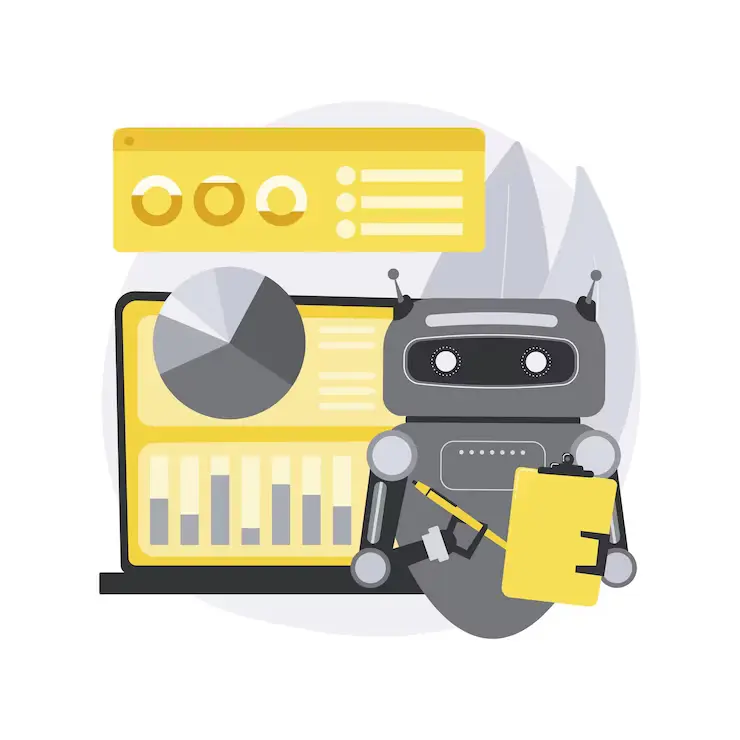Artificial Intelligence in Auditing
Artificial Intelligence (or AI for short) is the simulation of human intelligence by machines. Machine learning is a subset of artificial intelligence that can learn automatically through experience and exposure to data. These sound like fancy statements but what is AI really?
Simply put AI is statistics on steroids. It is a powerful tool that allows us to deal with huge quantities of data and be reasonably assured that the inferences drawn are accurate. AI has proven to be useful in a variety of areas like medicine, driverless cars, speech recognition, and of course in audit.
Key Applications of AI in Audit
The following are the domains where one could use AI in audit:
a. Helping you understand the behavior / pattern
AI is good at digesting large amounts of data quickly and identifying patterns or finding anomalies or outliers in that dataset. The objective is to identify whether a given data point fits within an existing pattern or if it is an outlier or anomaly. An example could be, identifying transactions which are more than 3 to 4 times of the average or standard deviation.
b. Digging deeper
AI can help in discovering unknown patterns, which perhaps the human mind may not have thought of. It can run multiple simulations on the data thereby making it more probable or likely to identify newer trends. It can perform macro and micro analysis there by helping you to dig deeper. A classical instance would be using AI in fraud detection patterns and using it real-time to prevent frauds.
c. Automating Routine Tasks
The boring and monotonous comparisons and reconciliation of data can be automated with a lot of rules and little bit of intelligence, thanks to AI. Most of our work in audit including performing of operating effectiveness testing, compliance and substantive procedures can be automated. It can also help in automating time-consuming documentation processes.
d. Performing risk analysis
With growing volumes in data, it is increasing becoming a challenge to analyze the entire population for doing risk assessments. AI comes to the rescue. With built in intelligence AI solutions can reveal how unusual sales reversals occur post month or quarter end for specific locations or specific accounts. Using these insights auditors can change the processes deployed in audit.
e. Predicting
AI powered with statistical models can help in identifying patterns which are likely to follow in the days to come. These act like early warning signals and help prevent possible frauds or lapses in internal control systems.
f. Analyze structured and unstructured data
Most of the current audits are focused on analyzing the structured data. However, AI powered solutions analyze the complete volume of structured and unstructured data that come from financial records by parsing data in detail.


A few practical use cases
- Reviewing of Contracts – The most common use case of AI in audit procedures is contract reviews such as leases. With the help of AI, an auditor can continuously analyze a larger number of contracts in real-time.
Using AI, auditors can automatically extract data from contracts with tools such as Natural Language Processing (NLP) and identify relevant clauses for accounting treatment such as lease commencement date, payment amount, renewal, and termination options and so on. Thanks to these findings, auditors can evaluate and assess risks in the contract more effectively.
- Spotting material misstatements in general ledger – Factors such as the large volume of data, insufficient time and inherent limits of internal control systems and accounting, have limited auditors to have to be content with the “reasonable assurance” motto. Auditors examine a subset of data rather than the entire data set hence the risk of material misstatement increases.
Use of machine learning improves the testing of ledger data by analyzing the entire dataset in a short period of time to identify material misstatements based on risk analysis rather than traditional audit rules. This allows AI-based tools to flag transactional data based on how far they differ from the standard set allowing for the spotting of patterns and anomalies within unstructured data with ease, a feat that was previously difficult at best, if not impossible.
- Automating expense audits – Another area where AI automates an audit process is with expenses. AI-powered tools can help businesses to detect duplicates, out-of-policy spendings, incorrect amounts, suspicious merchants or attendees, and excessive spending.
Benefits of AI in Audit
- Reduces the workload on auditors: Auditors do not have to go-back-forth for asking questions to the client as much as in traditional audit.
- Reduction of cost: Using AI reduces the cost involved in manual hours of research and analysis.
- Audit Quality: Good AI systems continuously learn and adapt to datasets so that they can better detect anomalies as more data is processed. Therefore, use of AI/machine learning increases the audit quality.
- Enhance focus: Using AI to power audits can help auditors focus on key aspects which require more attention and there by target key risks.


Limitations of AI
Powerful as it is, AI is still just a tool for use. AI is not a magic box that will supplant human beings from all areas of their usefulness. The truth is that AI needs humans significantly more that humans need AI.
AI may be able to scan through terabytes of data at speeds unthinkable for humans, but it is not able to interpret this data and draw meaningful conclusions. It may be able to identify patterns that we would miss but it is incapable to understanding the meaning behind those patterns and its implication in real life. At the end of the day, AI is only as powerful and the person using it.
How to get started?
While much has been spoken on how AI can move the work of audit, the real question is where does one get started? Below are a few tools and solutions which is worth exploring:
- Botkeeper can automate accounting power by Machine Learning.
- iManage can review 1000s of contracts and extract specific requirements using AI.
- Home grown company, Zoho’s ZIA is an AI assisted tool which can bring in automated analysis of data and acts as a second pair of eyes. It can be used extensively in Zoho Books and Zoho Analytics
- ai is analytics powered by AI and can help you demystify the complicated numbers and assess risk
- Not to forget, Microsoft Excel’s “Ideas” now called as “Analyze Data” uses AI to provide interesting, automated insights.
- withgoogle.com helps you have fund with AI

Conclusion:
We have seen the many wonderful uses that AI can have in the field of auditing. We have also seen why AI by itself is insufficient in many important ways. This leads us to an obvious conclusion. The greatest results are achieved when AI is used to augment the capabilities of humans and facilitate our actions.
Disclaimer
The tools and solutions mentioned are purely for educational purposes and the author does not have any interest in them or endorse them.
Author
The author CA Narasimhan Elangovan, is a practising CA and partner KEN & Co. He is a GRC Professional, a Digital transformation catalyst and an author. He believes in the power of technology to solve everyday problems. He can be reached at narasimhan@ken-co.in

